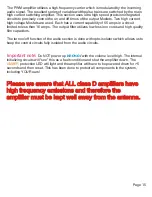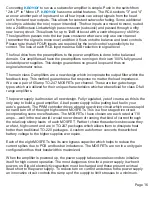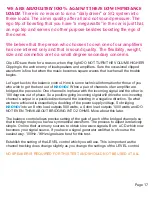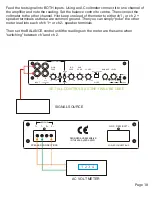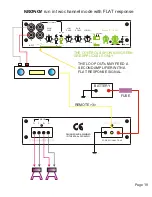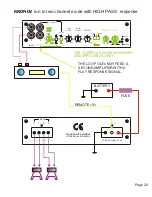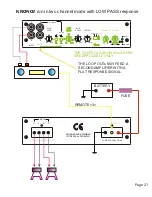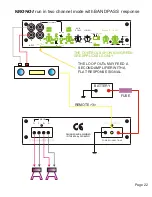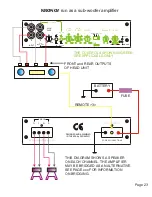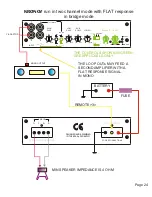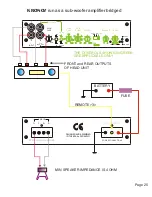
o a 100w/ch amplifier running into 4 ohms must develop 20 volts across the speaker
S
terminal. This requires a net (under load) rail voltage of about +/- 33 volts. Now for it to
have 3dB of headroom it must be capable of delivering 28.28 volts across the speaker
terminal. This requires a rail voltage of +/- 43 volts. So the above power supply will droop
a total of +/- 10 volts (a 23% droop!). This puts additional stress on the output devices
(Mosfets or Bipolars) because they still have to deal with this higher rail voltage . To us
this kind of power supply sounds like the amplifier is “breathing” and not the kind of
amplifier we want to listen to. Regulated power supplies are more expensive to
manufacture, are less efficient but we feel those are tradeoffs we can live with!
f one examines the specification of an amplifier, it is relatively easy to tell apart those
I
with well regulated power supplies and those with sloppy unregulated power supplies.
The ratio of 4 ohm as to 2 ohm power will readily inform us of the quality of that power
supply. Typically if the amplifier can double or almost double it’s continuous power rating
from 4 ohm to 2 ohm at ALL battery voltages this is indicative of a well regulated power
supply. There are a few manufacturers who manipulate the rail voltages at lower speaker
impedances so that the 4,2 and 1 ohm power specs are the same. We believe that this is
a cop out to save putting in a beefy power supply which is capable of the higher currents
needed for these low impedance loads.
ubsonic filters and CLIPPING. The former are simply steep slope high pass filters with
S
a frequency range between 10 to 50Hz. Their only function is to filter out those
frequencies which lie below audibility. The woofer’s cone will not “flop” around as it does
without the use of the filter and because all the low frequency energy that we cannot hear
is filtered out, the amplifier runs more efficiently since it does not have to amplify all those
inaudible low frequencies. Remember one fact, ALL amplifiers are pretty dumb. They will
amplify anything you put into them (assuming the amplifier’s frequency response is wide
enough) and whether we can hear a particular frequency range is not the amplifier’s
concern. Put in an inaudible frequency and the amplifier dutifully does it’s thing. It does
not care about the load. This is why tweeters are easily burnt when amplifiers are
clipping. The amplifier generates high frequency harmonics and this energy is thrown to
the unsuspecting tweeter. When an amplifier is driven into clipping it basically generates
a square wave. This contains a large amount of energy but also due to the fact that the
square wave sits at a positive (or negative) state for a “long” period of time, the natural
cooling effect of a continuously moving cone/voice coil is inhibited and can lead to failure
of a speaker. Typically woofers are more tolerant of clipped power than mids and
tweeters due to the fact that they are more robust and that they do not respond to those
high frequency harmonics very well (but do not be fooled, woofers can be hurt by these
harmonics even if we cannot hear them). The inductive reactance is (2 x 3.14 x freq x
inductance) and so the higher the frequency the higher the inductive reactance of the
speaker becomes. However it’s DCR does not change with frequency.
Page 10

















